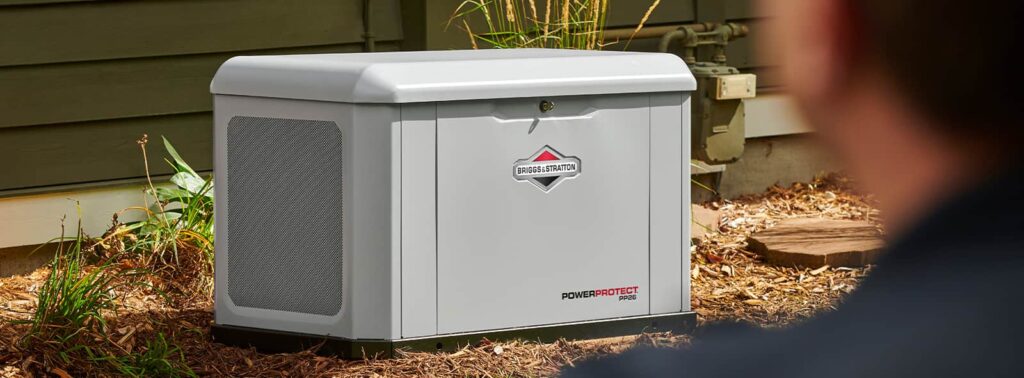Home Standby Generators: How They Work and Why You Might Want One

August 23, 2023
A home standby generator is an backup power system that can provide electricity to your home during a power outage. Standby generators are permanently installed outside a home and connected to a fuel source and the home’s electrical panel. Here is an overview of how home standby generator systems work and why you might consider installing one in your home.
How Home Standby Generators Work
A home standby generator consists of a few key components:
– Engine – This is usually a diesel or gas powered motor. It provides the power by combusting fuel. The engine turns an alternator to generate electricity.
– Alternator – The alternator uses the mechanical power from the turning engine to generate electrical power.
– Automatic Transfer Switch – This device monitors incoming utility power and starts the generator when it senses a power outage. It safely transfers your home’s electrical load over to the generator.
– Fuel Source – Diesel and natural gas are common fuel sources for standby generators. Propane can also be used. The fuel is stored on-site in a tank.
– Enclosure – This sound-attenuating enclosure houses the generator components outdoors. It helps reduce noise emissions.
Here is a simple sequence of how a home standby generator would operate during a power outage:
1. Utility power is lost at your home. The automatic transfer switch senses this.
2. The transfer switch starts the standby generator engine and allows time for it to warm up.
3. Once ready, the transfer switch disconnects your home from the utility power lines. It then connects your electrical system to the generator’s alternator.
4. The alternator starts generating electricity that is sent into your home’s electrical panel to power essential circuits.
5. When utility power returns, the automatic transfer switch turns the generator off and reconnects your home back to the utility power lines.
A home standby generator will typically power your home’s most important circuits during an outage. This includes major appliances, lighting, heating/cooling systems and outlets. Non-essential circuits like pool or landscape lighting will usually not be powered.
Benefits of a Home Standby Generator
There are several advantages to having a permanently installed home standby generator:
– Provides backup power automatically – Starts up on its own when an outage occurs. No need to manually turn it on.
– Powers large loads – Can provide sufficient electricity for large appliances and home systems, unlike smaller portable generators.
– Runs on home’s existing natural gas or propane fuel supply.
– Can run continuously for long duration power outages (days or weeks if needed).
– Protects home against power surges that can damage electronics.
– Provides peace of mind during outages knowing your home has power.
– Allows you to comfortably shelter in place during an extended outage.
– Maintenance is fairly minimal – Just occasional testing and fuel monitoring.
– Increases resale value of home.
Considerations Before Installing a Standby Generator
There are some important factors to weigh before installing a home standby generator:
– Upfront cost can be high – $5,000 to $15,000 installed depending on size.
– Requires professional installation and fuel line connections.
– Ongoing maintenance is required. Testing per manufacturer guidelines.
– Fuel storage tank must be installed and refilled periodically.
– Generator may need to be registered with utility company before use.
– Local permits and inspections may be needed for installation.
– Noise should be considered. Units are muffled but still generate noise when running.
Overall, a home standby generator can provide valuable backup power protection for those wanting to keep their home powered during extended outages. The upfront cost can be high, but the benefits are significant for many homeowners if power reliability is a concern. Consulting with a professional generator installer is recommended to properly size and install a unit for a specific home.


